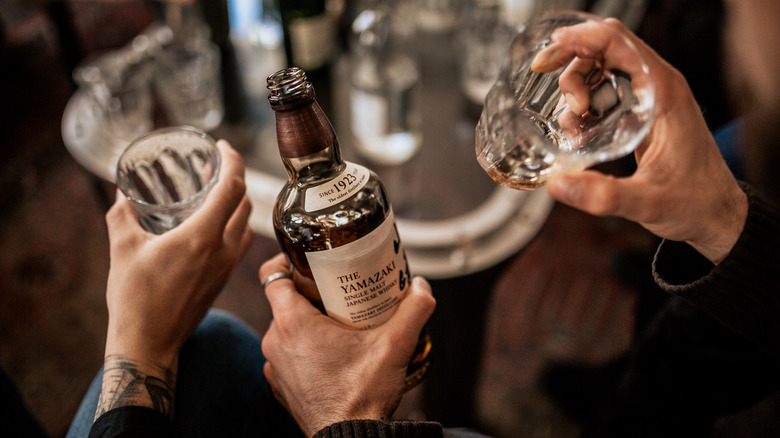What Gives Japanese Whisky Its Distinct Flavor
True whisky connoisseurs can recognize and appreciate the tastes and textures found in different brands. From smooth Tennessee whiskies, malty Scottish blends, sweet Irish whiskies, and spicy spirits bottled in India, brewers have the ability to transport whisky lovers to different places through selected ingredients and distilling processes. For Japanese brands, like Takamine, whisky production results in flavors that can't be found anywhere else in the world.
While Scotland is known for its whiskies, Japanese whisky labels have also made waves in the industry, notes Sip Awards. Instead of mimicking smoky notes found in competing spirits, the Japanese have set out to make whisky unlike anywhere else. Flavors are delicate and crisp, and distilleries, like Yamazaki, use copper pot stills of different sizes and shapes to produce unmatched blends (per CNN Travel). Some brewers even age whisky in Japanese mizunara oak — an expensive and rare material that lends notes of sandalwood, coconut, and spice, describes Wine Enthusiast.
The location matters
Turns out, Japan's water sources and climate impact the taste and mouthfeel of the whiskies made within the country, notes Sip Awards. The clear mineral water combined with the hot summers they have in Japan impact the spirits' maturation process. Keep in mind, Japan's temperatures impact the way in which whiskies mature as well, describes DK. The colder winters slow maturation, while hot, humid summers accelerate the aging process. As a result, Japanese whiskies don't take quite as long to mature as Scottish varieties, explains Uptown Spirits. The finished whisky presents bolder, richer flavors and a higher ABV content than other brands. In fact, Yamazaki 12 Year clocks in at 43% ABV.
Though Japanese whiskies were once more obscure to find, popularity has helped put these bottles behind bars and on shelves at home. The price point is often a bit higher, but if you can splurge, the experience may very well be worth it.

